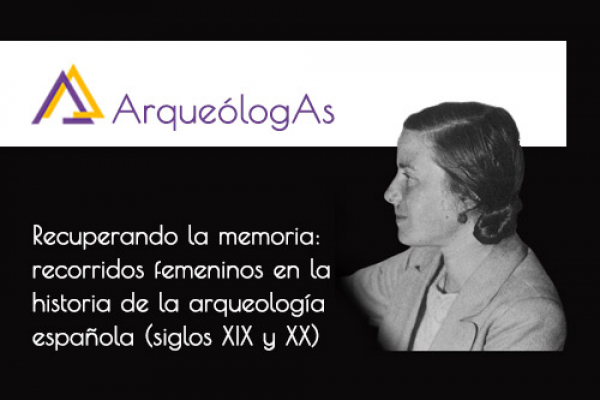ArqueólogAs, a project that analyzes the role of women in the history of archaeology in Spain
Isabel Ordieres Díez, Professor at the Escuela Técnica Superior de Arquitectura from Universidad de Alcalá, participates in the project 'ArqueólogAs'. This work investigates the role of women in Spanish archaeology during the 19th and 20th centuries. Isabel discusses what her tasks are within this multidisciplinary research team for uah.esnoticia.
- What´s the 'ArqueólogAs' project? Why is it important to know the role of women in Spanish archaeology of the 19th and 20th centuries?
The research team aims to reconstruct as complete a story as possible through the recovery, sometimes by direct and oral testimonies, of multiple personal stories that have so far been silenced but which had their weight in the conservation and study of our cultural heritage. This knowledge is important, for justice for their work, in many cases relevant but unknown, and also because of the need to make them visible so that they can become an example of their vital journey and as a reflection on all the difficulties, some inevitable, null and void, that they had to face throughout their lives.
- What are the main objectives of the study? How long will the project be developed?
It´s about finding all the interrelations and specific circumstances that have composed this story, having as protagonists, for the first time with their own voice, women from various fields related to archaeology: university professors, or professionals who worked in research centers, museums or commercial archaeology, associations, or even within the private collection, sometimes working almost anonymously alongside their male colleagues, specifically since the beginning of the professionalization of the discipline in the mid-nineteenth century.
As is usual in this type of R+D Projects, the duration of the research will be three years.
 |
| Isabel Ordieres Díez |
- What is the role of the UAH in this investigation? What are the functions and projects you are developing within the framework of this work?
In my specific case, I am a doctor of Art History and a full professor at a School of Architecture. Much of my research has been devoted to the field of spanish architectural restoration history. On the other hand, I have already made some incursion into gender-related research and that´s why I found it interesting, on the occasion, to approach an aspect never studied, such as the role of restorative architects.
It should be noted that much of the decisions in the conservation and restoration of the Spanish monuments, which would have required the work of professional archaeological exploration, remained exclusively until quite recently, most of the time, in the hands of restoring architects. For this reason, I must first detect how and when these women's career irruption in this field, circumstances that usually explain some unexpected aspects, and then analyze what role they played and what positions they took in this particular activity of heritage conservation.
- A diverse and varied group of professionals participate in this research. Why is it important to work with a multidisciplinary team within archaeology?
From my accumulated experience, interdisciplinarity has been extremely enriching. Thanks to her I have been able to reach interconnections, new links of ideas, which I would never have discovered alone. It should be noted that archaeology has been a discipline that has taken more than a century to define methodologically because it shared its object of study with other branches of research, especially with art history.
The research team is very rich and this will allow us to cover our objectives in a more ambitious way. The research team is made up of specialists from the following institutions the University of Barcelona, the Complutense University of Madrid, the University of Alcalá, the University of Alicante, the University of Málaga, the University of Évora, Tufts University, the School of Royal Equality, Humanities, Communication and Culture (ESIRHCC), the National Archaeological Museum, the National Museum and Research Centre of Altamira, the Casa Bonsor - Castillo de Mairena (Mairena del Alcor Town Hall) and the General Directorate of Cultural Heritage of the Community of Madrid.
Publicado en: Inglés
